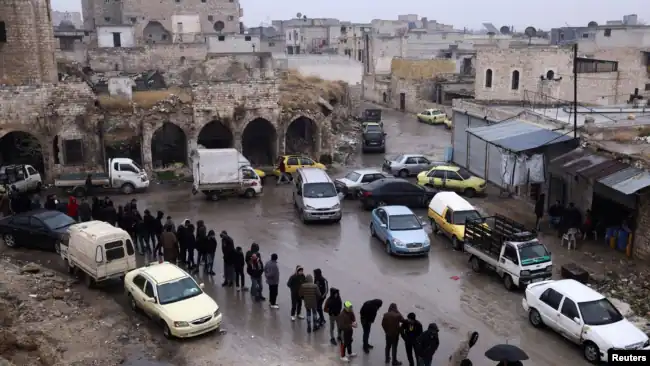By Adeyemi Adekunle
Syria has entered a pivotal chapter in its tumultuous history, as new authorities announced on Tuesday that armed groups across the country have agreed to disband and integrate into the Defense Ministry. This decision comes weeks after the ouster of longtime leader Bashar al-Assad, signaling a shift toward centralized governance and potential stability in a nation fractured by a 13-year civil war.
The announcement followed a historic meeting between the leaders of armed factions and Ahmad al-Sharaa, who led the decisive rebel advance that culminated in the capture of Damascus on December 8. Sharaa, now at the helm of Syria’s transitional leadership, emphasized the government’s commitment to asserting state authority over all armed entities.
“We will absolutely not allow weapons to exist outside of state control,” Sharaa declared. His statement underscored the administration’s determination to forge a unified Syrian army, a stance that extends to the Kurdish-led Syrian Democratic Forces (SDF), whose role in the new Syria remains a subject of negotiation.
Farhad Shami, a spokesperson for the SDF, welcomed dialogue with Damascus, expressing optimism about the integration of Kurdish forces into the national army. “This would strengthen the whole of Syria,” Shami said, adding that resolving such issues through dialogue is critical for the nation’s unity and security.
The SDF has played a key role in countering the Islamic State (IS) in eastern Syria, often in coordination with U.S. forces. The prospect of their integration marks a significant step toward bridging divides between different factions that have vied for influence throughout the war.
Sharaa’s forces’ swift advance through key cities earlier this month effectively ended a years-long stalemate, dismantling the Assad regime and reshaping Syria’s political landscape. The collapse of Assad’s grip on power has triggered a flurry of diplomatic activity across the Middle East, with regional governments sending envoys to Damascus to engage with the new leadership.
The speed of Sharaa’s rise has left many questioning the long-term stability of the country. Concerns about a power vacuum have resurfaced, particularly with the lingering threat of IS, which once controlled vast swathes of territory in Syria and Iraq.
The ripple effects of Syria’s transformation are being felt throughout the region. Turkey has expressed interest in establishing a maritime demarcation agreement with Syria once a permanent government is in place. However, Turkish Transport Minister Abdulkadir Uraloglu cautioned that such negotiations remain a distant prospect. “Of course, an authority must first be established there,” Uraloglu said.
In Egypt, Syrian refugees face mounting uncertainty as new regulations question their residency rights following Assad’s ouster. For many displaced Syrians, Egypt had become a refuge during the war. Now, the fall of the Assad government leaves their future in limbo, adding another layer of complexity to Syria’s evolving narrative.
Amid these developments, international forces remain active in Syria. On Monday, the U.S. military confirmed an airstrike in Deir el-Zour province that killed two IS militants. The strike targeted a truckload of weapons, signaling Washington’s ongoing commitment to combating terrorism in the region.
For Syria’s new leadership, the challenges ahead are immense. Reintegrating fragmented armed groups, rebuilding trust among diverse ethnic and political factions, and addressing regional and international concerns will require deft diplomacy and decisive action.
As the dust settles from Assad’s dramatic fall, hopes for a unified and peaceful Syria remain tempered by the realities of a nation scarred by over a decade of war. Still, Tuesday’s announcement offers a glimmer of hope that, for the first time in years, Syria may be on the path to reclaiming its sovereignty and rebuilding its future.




